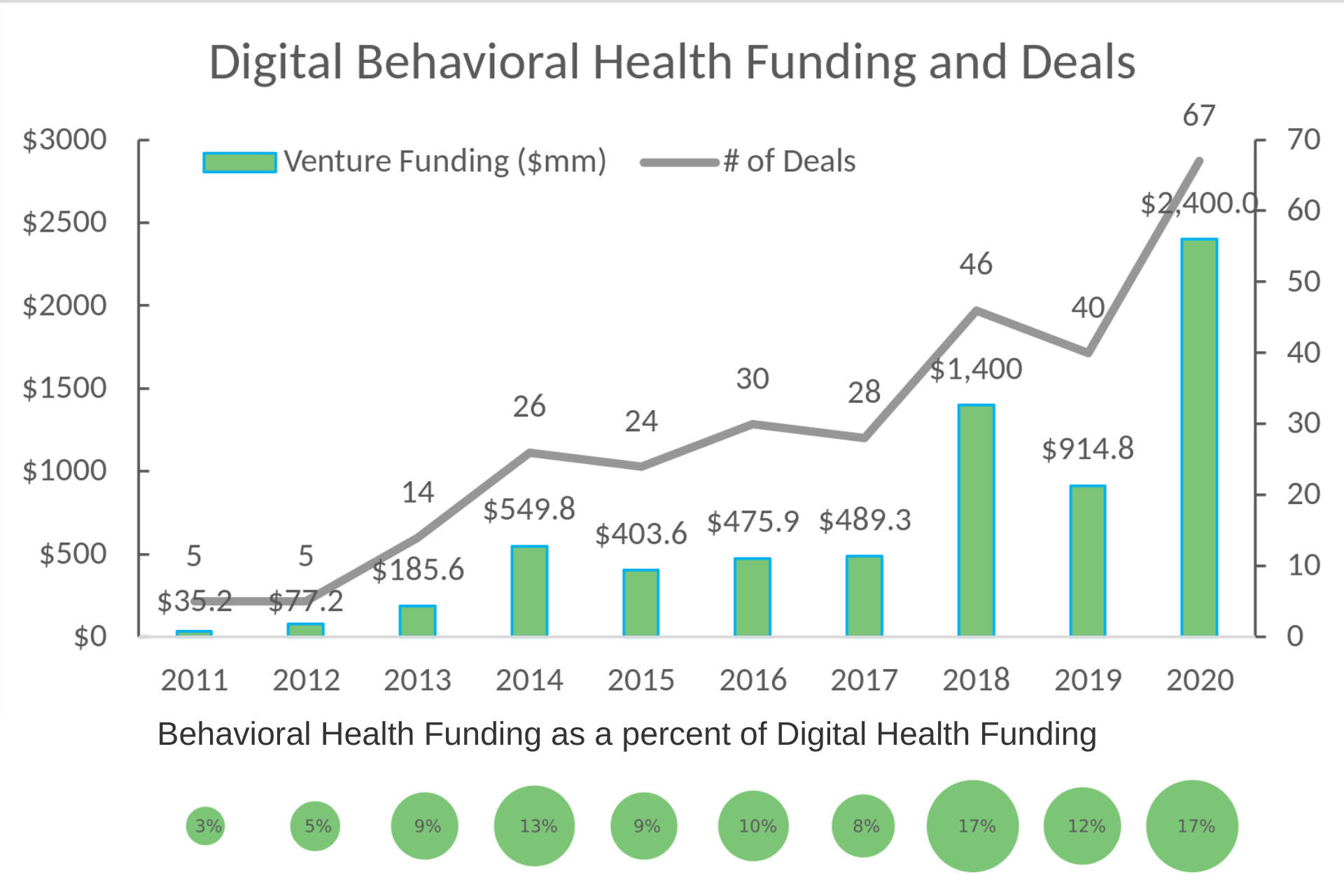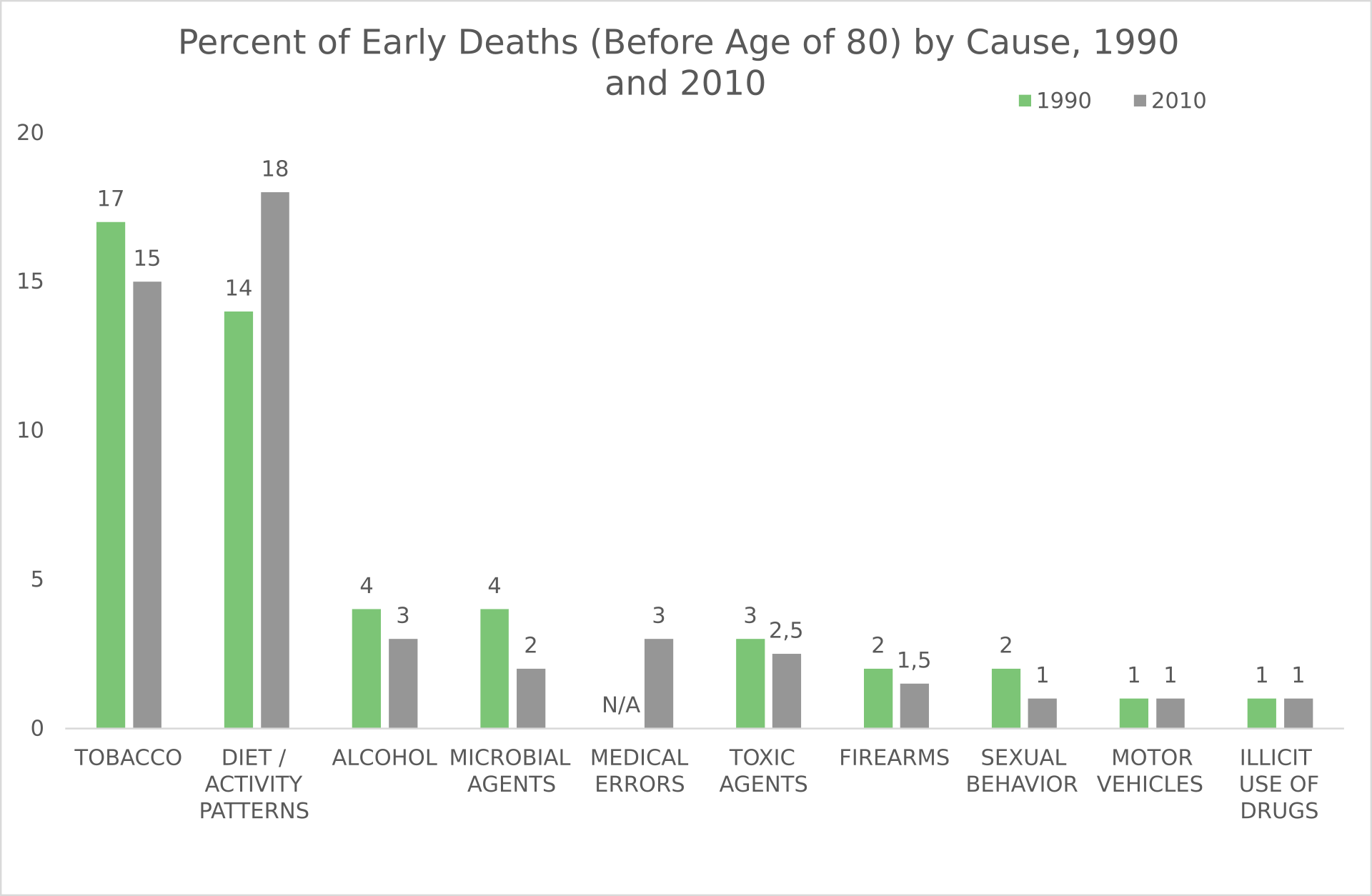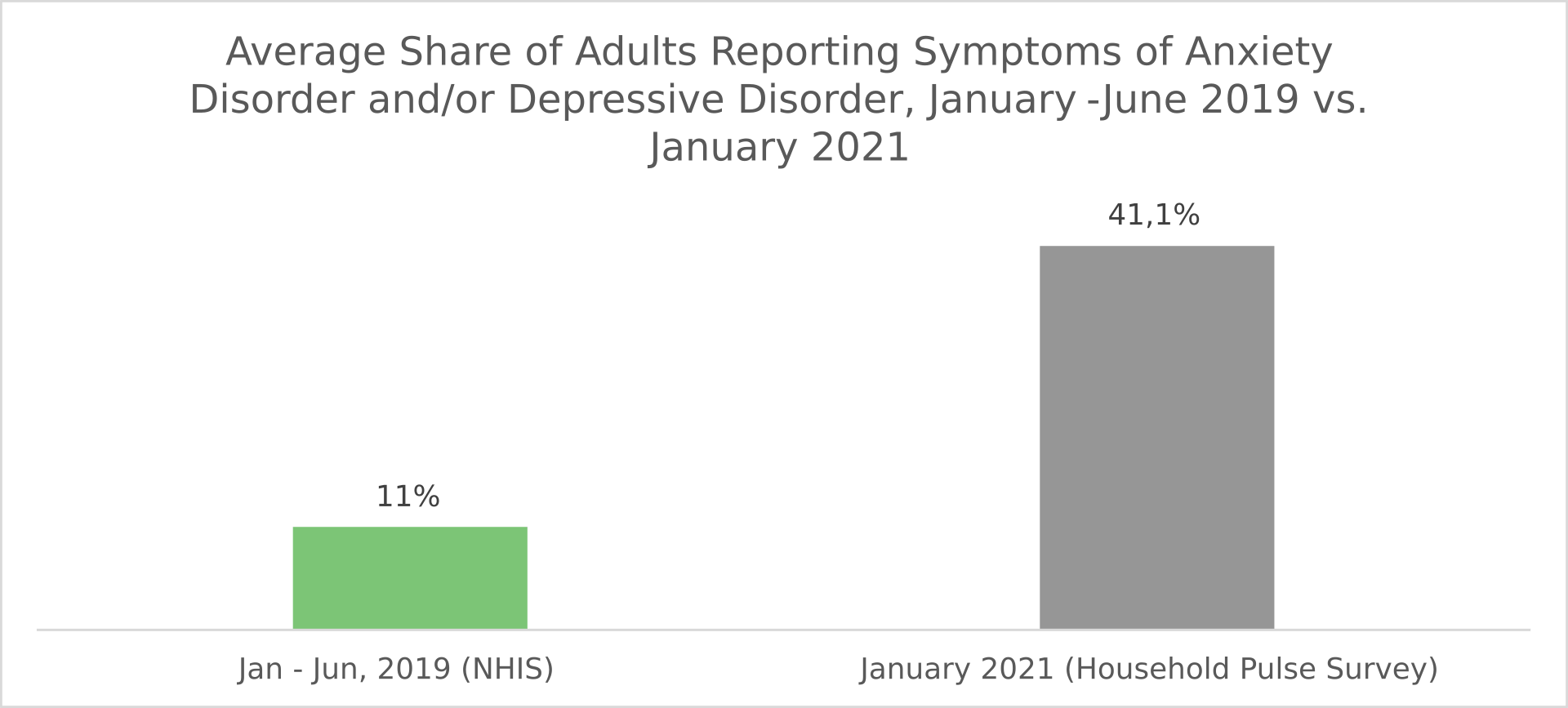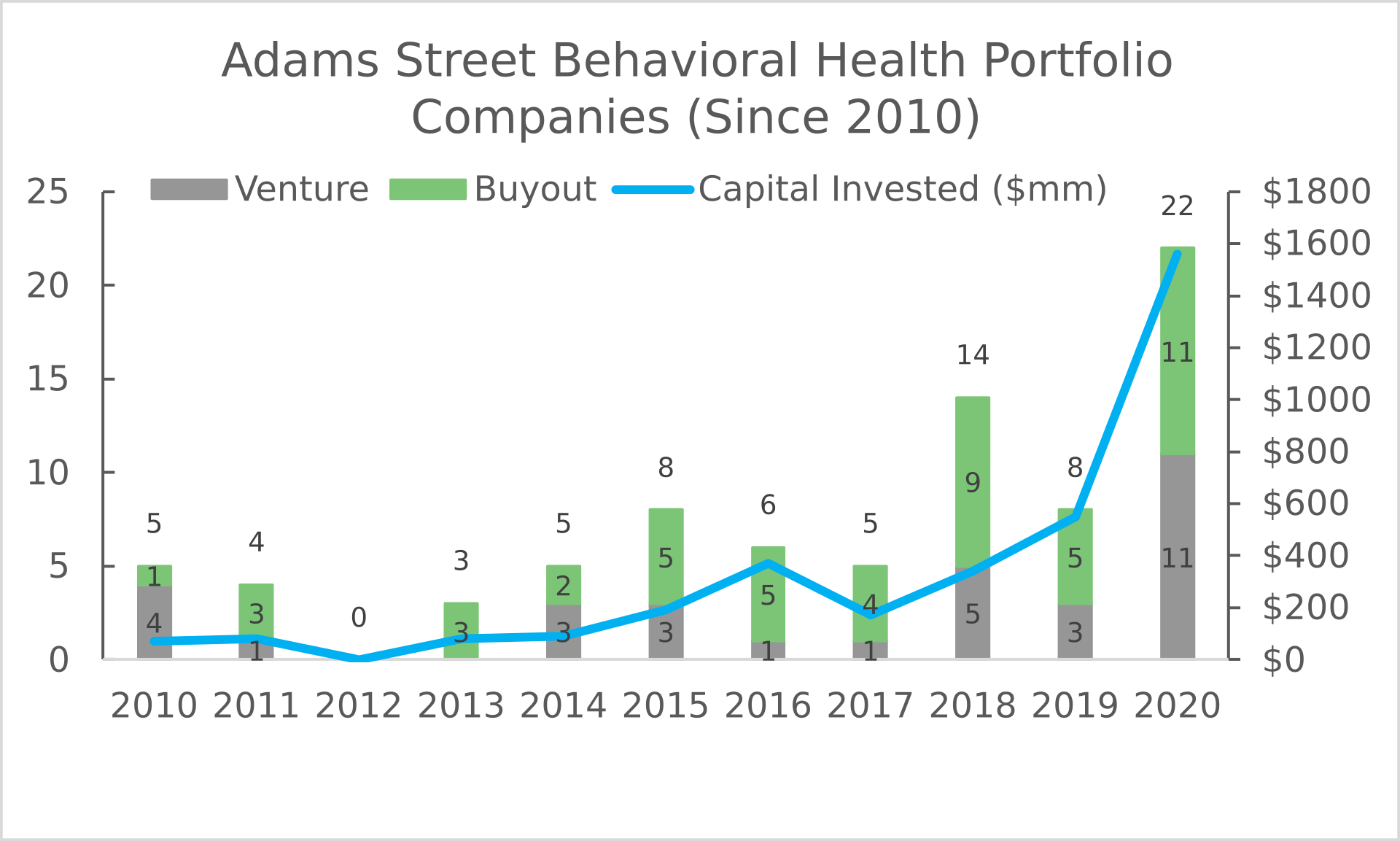Behavioral health is a term used to describe everyday habits that affect a person’s well-being, such as lifestyle factors and massive causes of morbidity in developed countries, including smoking, substance abuse, diet, and lack of exercise.
Behavioral Health among the current key healthcare trends. How does lifestyle affect health status?
Though the impact of some factors (tobacco use, exposure to toxic agents, microbial infections, sexual behavior) has reduced in the past few years, some other behavioral factors impede the overall reduction in premature deaths. Statistical data about the attribution of premature deaths are shown in the diagram below summarizing findings from J. Michael McGinnis study. The diagram is adapted from www.prb.org.
Figure 1: Average Share of Adults Reporting Symptoms of Anxiety Disorder and/or Depressive Disorder, January-June 2019 vs. January 2021 (adapted from www.prb.org)
In the US, up to one-third of adults meet the criteria for a behavioral health disorder, with fewer than half receiving treatment for their condition. What is more, about 70% of adults with a behavioral/mental health disorder also have a physical health condition. With nearly half of country deaths linked to lifestyle factors, behavioral medicine is getting more and more attention.
5 key current trends in behavioral health
Since covid brought behavioral health into the spotlight, new needs have emerged, and the behavioral health ecosystem has been experiencing change. Within the constantly evolving landscape, we identified the following trends.
- COVID-19 worsened the already existing behavioral health crisis.
The pandemic outbreak has led to a surge in cases of anxiety/stress, emotional isolation, and depression, as well as to an increase in substance use, a proportion steeply higher than that reported prior to the pandemic The diagram below (taken from an NHIS survey) and adapted from www.kff.org confirms the implications of COVID-19 on mental health.
Figure 2: Average Share of Adults Reporting Symptoms of Anxiety Disorder and/or Depressive Disorder, January-June 2019 vs. January 2021 (adapted from www.kff.org)
- The need to standardize how we measure behavioral health outcomes is critical.
The increased demand for ABA (Applied Behavioural Analysis) emphasizes the need for a standardized method/tool to measure its benefit on treated patients. The providers’ implementation of such tools would reveal the offering’s real value. At the same time, collaborating with payers would support ABA therapies expanded use.
- There is increased awareness around behavioral health and associated social and financial burden.
With direct and indirect costs (poor quality of life, loss of productivity, early death) of behavioral illness accounting for as much as 4% of the global GDP, policy changes were mandated.
The Mental Health Parity and Addiction Equity Act (MHPAEA) was implemented in 2008. The 21st Century Cures Act that allocated additional resources to improve the enforcement of MHPAEA further enhanced this effort.
- Social challenges call for innovative behavioral health treatments.
The ultimate aim of behavioral health, as in most healthcare sectors, is to provide better outcomes to larger populations at a lower cost. It is a fact that care models have evolved, and reimbursement has improved.
In 2017, Qualifacts Systems introduced a software solution for mobile behavioral health to provide fully functional mobile applications for the behavioral healthcare staff. The Centers for Medicare & Medicaid Services (CMS) introduced behavioral health integration, including a psychiatric collaborative care model and new behavioral health integration codes. Moreover, Medicare provides reimbursement for tele-mental health services and covers costs, including consultation charges and clinic visits.
However, when it comes to the quality and personalization of the treatments offered, there is space for further innovation for key stakeholders (payors, providers, policymakers, and employers).
- Market forecasts show growth and increased investments in the behavioral health space.
Reports released by different agencies (e.g., Adams Street, Rock Health) illustrate a significant increase in the total volume of investments in the behavioral health space in the past few years. This increase is no surprise when considering the impact of behavioral illness. It is also indicative of the potential and future development of the space.
Specifically, a recent report forecasts that the behavioral health market is expected to register a CAGR of 3.4% during 2022-2028. Cerner Corporation, Core Solutions Inc., EMIS Health, Epic, Meditab, Holmusk, Metsmart Technologies, Qualifacts Systems, inc., and Welligent, Inc. are identified as key players in the space.
The diagrams below (adapted from Adams Street) show Adams Street Behavioral Health Portfolio Companies (since 2010) and Digital Behavioral Health Funding and Deals respectively.
Figure 3: Adams Street Behavioral Health Portfolio Companies since 2010 (adapted from Adams Street)

Working towards addressing behavioral health challenges
Though behavioral health is becoming mainstream, certain challenges remain. Mental illness stigma and the unawareness around processes and sources of help prevent sufferers from accessing treatment. At the same time, the collection and analysis of complete and accurate data is another pain point for healthcare providers and patients.
We believe that better education, increased awareness, and more personalized offerings will help patients overcome their hesitations and get the help they need, while the development and implementation of user-friendly, cost-effective digital tools will allow closer collaboration between physicians and patients and offer tailored solutions for individuals’ conditions and associated needs.
Are you interested in digital behavioral health applications?
Or do you need a partner to help you identify digital health investment opportunities?
Contact us and gain best-in-class market insights. Learn how we help you make informed decisions.
#behavioralhealth #mentalhealth #telehealth #primarycare #mentalillness #behavioralmedicine #mentalhealthmatters
Sources:
https://explodingtopics.com/blog/healthcare-trends
https://www.adsc.com/blog/5-behavioral-health-trends-for-2022
https://www.adamsstreetpartners.com/insights/behavioral-health-trends/
Up to Half of U.S. Premature Deaths Are Preventable; Behavioral Factors Key | PRB
Why We Invested in Lyra – Transforming Behavioral Health (adamsstreetpartners.com)
Top Challenges for the Behavioral Health Industry in 2022 (opusbehavioral.com)
Behavioral Health Market: Industry Trends, Share, Size and Forecast Report (futurewiseresearch.com)
The Implications of COVID-19 for Mental Health and Substance Use – Issue Brief – 9440-03 | KFF


